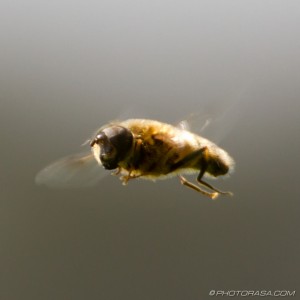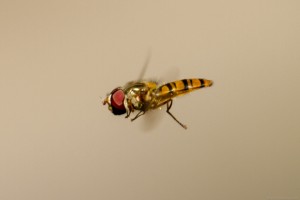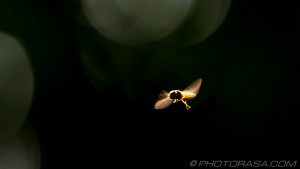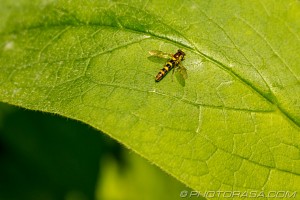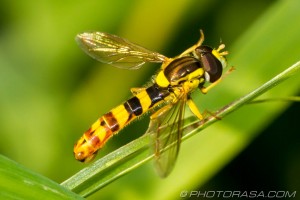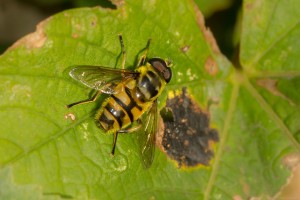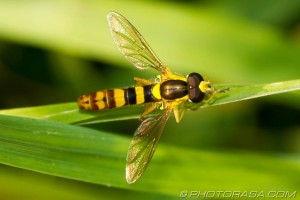Hoverflies
Hoverflies are a large family of flying insects, many of which mimic the appearance of wasps and bees. The bodies of the flies usually feature similar black and yellow stripe patterns on the abdomen. This mimicry is an effective defence mechanism, warding off potential predators (such as ourselves) who could mistake the hoverfly for a more dangerous insect. One can usually identify a hoverfly by initially observing the flight of the insect. It tends to hover more than the average wasp or bee although flight patterns vary from species to species. A closer look at your average hoverfly will show obvious cosmetic differences from a typical wasp or bee, such as different sizes of head, thorax and abdomen, and different body patternation.
The hoverfly family is known as Syrphidae in the latin vernacular. This family is very large, featuring some 6000 different species, and is spread out far and wide with hoverflies living and breeding on all continents across the world except Antarctica. They can live happily in most climates and environments except areas with extreme temperatures such as deserts or tundra.
Hoverflies are sometimes known as flower flies, for obvious reasons. They feed on nectar and pollen and so are often found near flowers. Hoverflies are considered one of the biggest and most important pollinators of plants in the world behind bees.
Hoverflies Photo Gallery
Hoverflies are often used as biological control agents. Pests such as aphids and leafhoppers can devastate large areas of crops, quickly spreading diseases such as curly top. Hoverflies are natural predators to these pests so have been deliberately introduced to problem areas in order to reduce their numbers.

